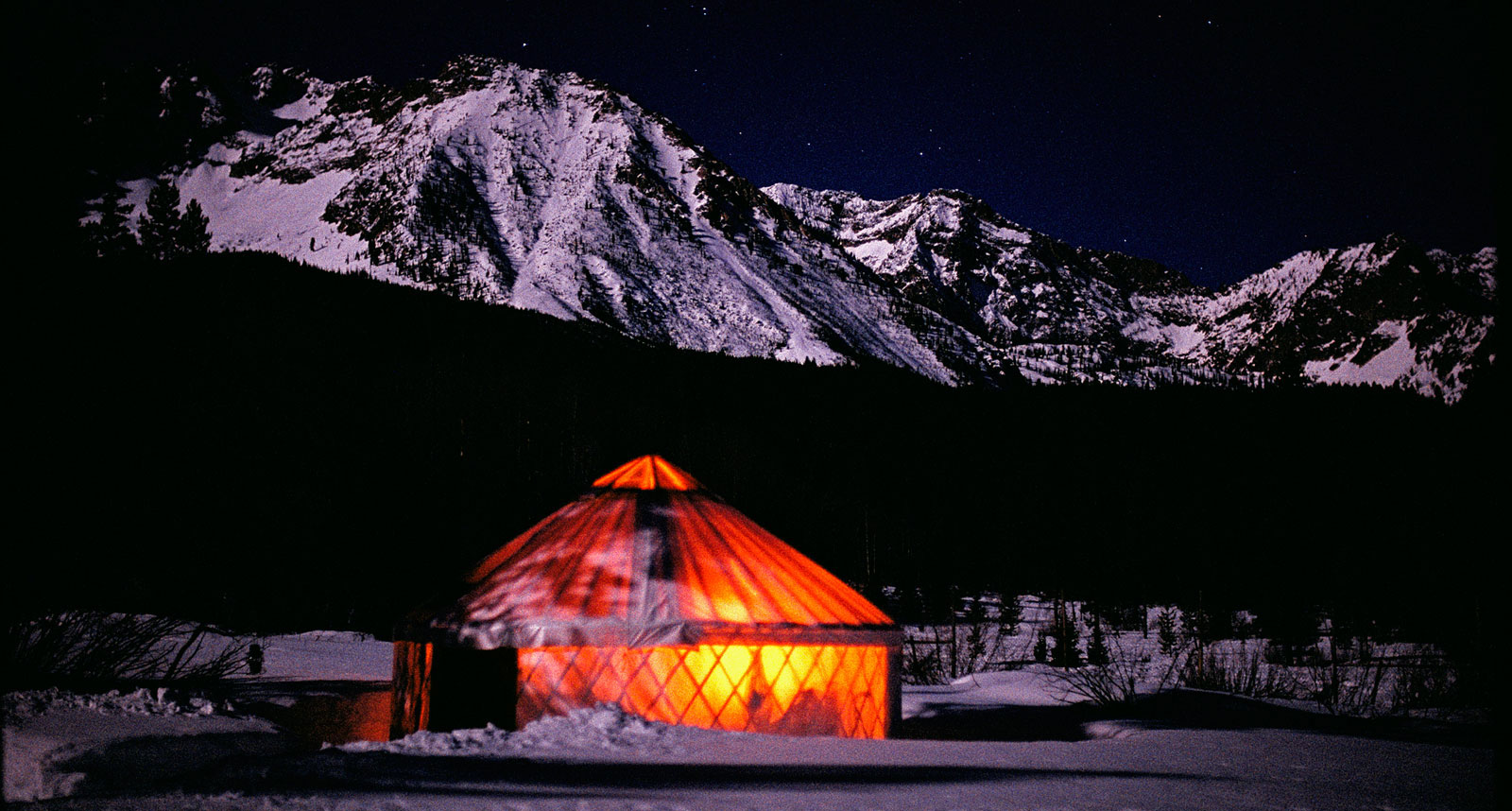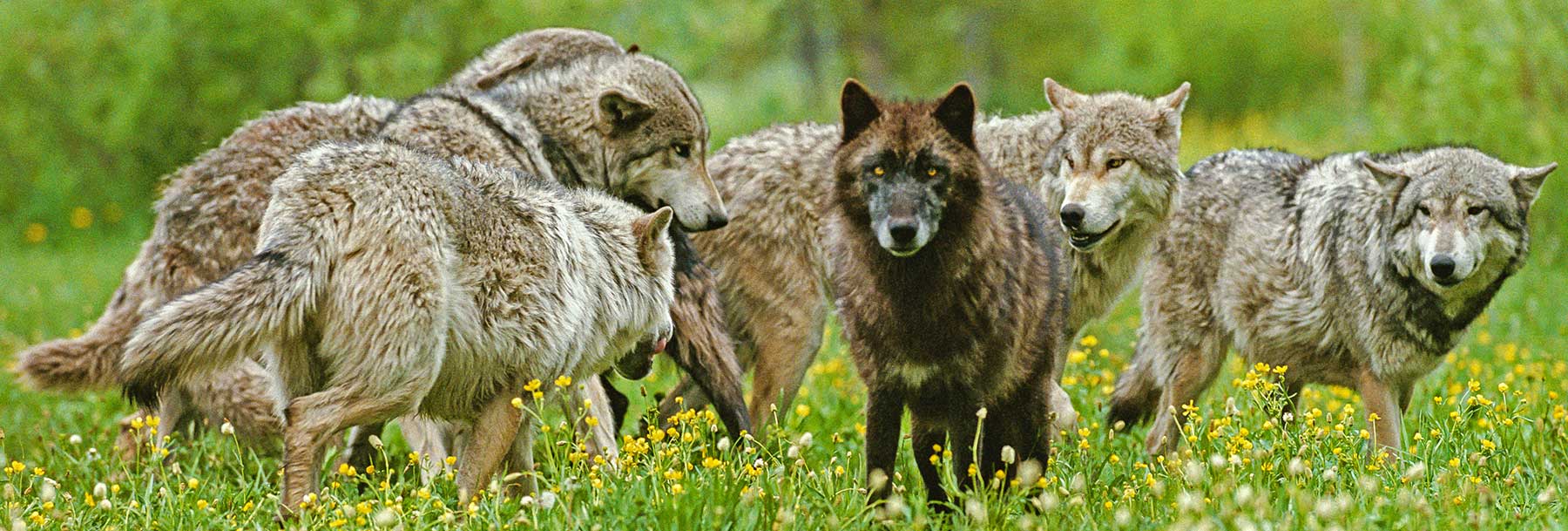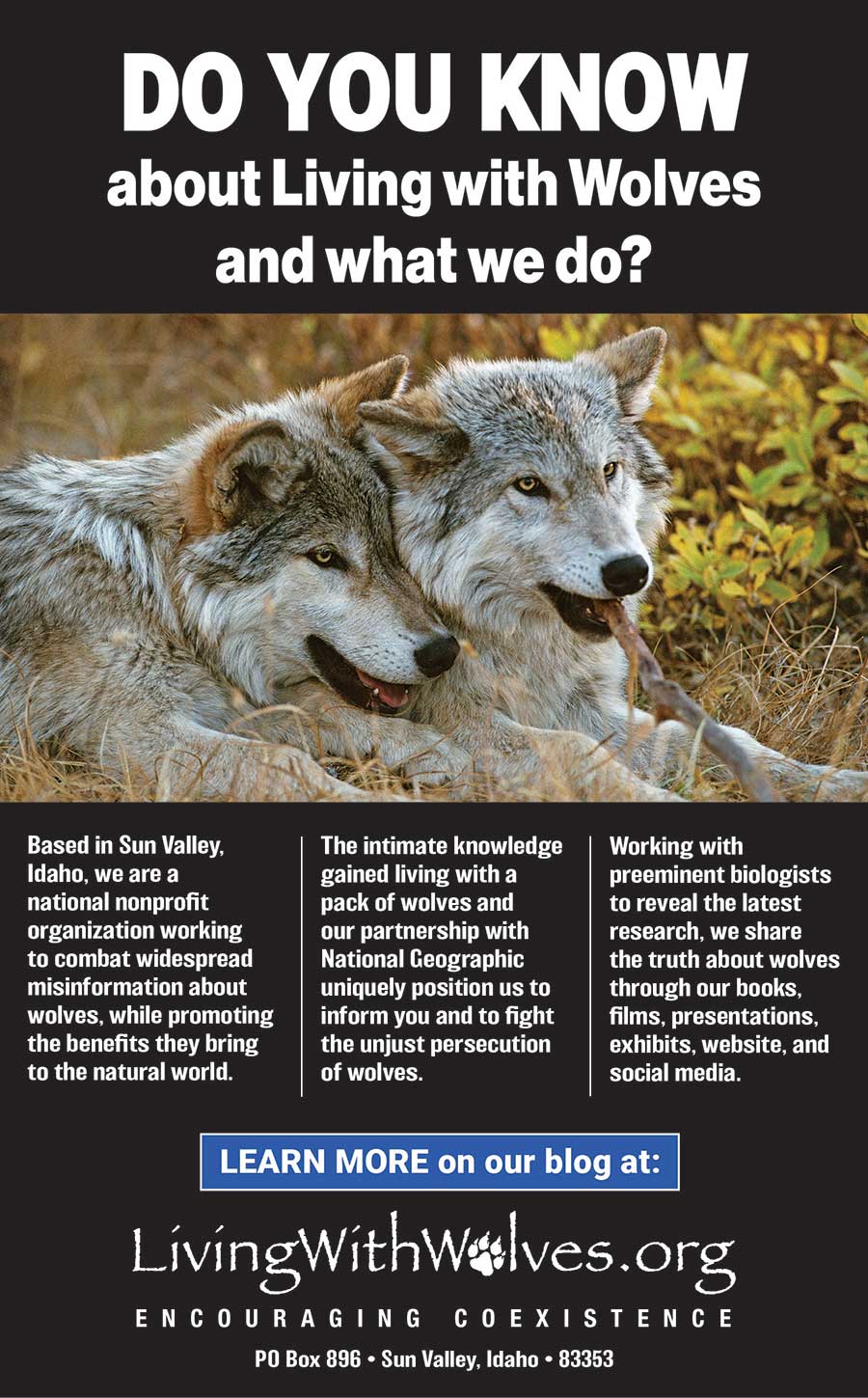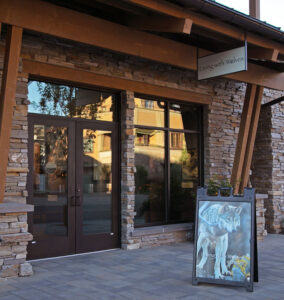What Is Living with Wolves?
Living with Wolves is a national nonprofit organization uniquely positioned to inform you about wolves, a species unjustly persecuted by policy makers, ranchers, hunters and trappers. After the life-changing experience of living with the Sawtooth Pack in the mountains of Idaho, Emmy award-winning filmmakers, Jim and Jamie Dutcher, turned their attention to countering the widespread misinformation about wolves. They founded Living with Wolves in an effort to encourage coexistence with wolves and to inspire people to protect them. Through the ongoing support of people like you from around the world, Living with Wolves has been able to reach millions of people in an effort to secure a better future for wolves in the wild.
The Sawtooth Pack: Where It All Began
The spark of an idea ultimately became a life’s work. While searching for his next wildlife film project, Jim Dutcher began to contemplate wolves as the subject for a television special. In order to capture an intimate portrait of this elusive animal on film, he knew he needed to get close enough to be able to look into their eyes. Seeing wolves at all is a rare enough occurrence; to see them demonstrate their social structure, their methods of communication, and their private family life requires special conditions.
By socializing wolf pups from four different litters, and living in a tented camp within the largest enclosure of its kind, Jim and Jamie Dutcher were able to gain the wolves’ trust. Creating an environment where a pack of wolves could open their lives to human observers and accept them as just another part of their world allowed the Dutchers to observe wolf behavior in a way that few people ever have.
As a constant but unobtrusive presence, the Dutchers documented, recorded, and photographed life inside the pack over the course of six years. Their approach led to amazing insights into the social life of wolves. As a result, audiences have become acquainted with an animal that, in addition to being a successful predator, is curious and playful as well as independent and resolutely devoted to family.
The subsequent films that featured the Sawtooth pack helped to dispel myths and show a side of wolves never seen before. Wolf: The Return of a Legend, Wolves at our Door and Living with Wolves all promoted a positive message about wolves and have been viewed worldwide. Nevertheless, misconceptions and controversy surround wolves to this day, sometimes overshadowing the vital role that they play in natural ecosystems. When wolves were reintroduced to America’s Mountain West, the project with the Sawtooth Pack was coming to an end. Although wolves were protected for a time under the Endangered Species Act, a new chapter in the saga of the wolf was beginning in which wolves were once again subjected to violent persecution.

The Nonprofit Organization
In 2006, Jim and Jamie founded the nonprofit organization, Living with Wolves, as a way to continue to speak up on behalf of this magnificent animal. Still misunderstood by the general public and unjustly targeted by many of the government officials dictating wolf management policy, wolves needed a voice. Joined by Program Director Garrick Dutcher, a knowledgeable expert in his own right, along with a dedicated staff, the organization is guided by a distinguished Board of Directors.
Although wolf recovery was well underway, there was, and there remains today, a critical need to educate the public and policy makers about the true nature of this misunderstood animal. Through their films, books, magazine articles, interviews, website, and hundreds of presentations, the Dutchers have reached millions of people as their story of wolves has circled the globe. Through National Geographic Live! presentations, the Dutchers were able to share their intimate story of the Sawtooth Pack to audiences of thousands of adults and students, eager to learn more about wolves.
The impact of Living with Wolves’ substantial educational outreach has spread fact-based information where misunderstanding, fear and hatred once prevailed. Living with Wolves endeavors to turn fear into understanding and misinformation into acceptance, while helping people realize that wolves are an essential contributor to our natural world.
National Geographic Partnership
In partnership with National Geographic, the Dutchers have published five books for adults and children. With stunning photography and informative text, readers are granted a tantalizing glimpse into the world of a wolf pack. Another collaborative project with National Geographic is the Living with Wolves photography exhibit.
The exhibit has traveled the nation and presents a fascinating look into the social structure of a wolf pack. The exhibit has helped to educate millions of visitors in a variety of locations around the country. The exhibit premiered in the rotunda of the Russell Senate Office Building in Washington, D.C. A permanent installation of the exhibit can be found at the Detroit Zoo, while another traveling version of the exhibit has been making a tour of Colorado ahead of the ballot proposition that will allow Coloradans to vote on reintroduction of wolves to their state in the fall of 2020.
Additionally, Living with Wolves created an online interactive version of the traveling exhibit, which is available to everyone on the Living with Wolves website. It is a treasure trove of information about wolves. Brought to life through beautiful photography, artwork from National Geographic, and an interactive 3D model from the Idaho Museum of Natural History, viewers will find the world of the wolf at their fingertips.
In partnership with National Geographic Society Education Programs, Living with Wolves created two gray wolf educational resources. A teachers’ guide for grades K – 12 provides content about wolves as a focal point for a variety of engaging lessons. The lesson plans are designed to meet national standards for core curriculum elements in science, social studies, and the language arts. A family activity guide is designed for kids ranging from 4 to 10 years old, but it’s fun for the whole family.
Both educational guides are available at no cost on the Living with Wolves website. The activities in both guides are intended to dispel common myths and prejudices about wolves, to spark an interest in young people regarding the true nature of wolves, and to encourage students to get involved in conservation efforts.

Other Work
With over a million social media followers, Living with Wolves strives to keep people informed about current developments in wolf news around the globe. Controversial hunting and trapping policies have been brought to light, and in some cases, have been stopped, thanks to the widespread support of concerned citizens.
In 2011, ahead of the ultimate decision to delist wolves as an endangered species, Living with Wolves delivered a comprehensive document titled Wolves at a Crossroads to all members of Congress. Living with Wolves has worked with a broad array of government officials at the local, state and federal levels including the Department of the Interior, the U.S. Fish and Wildlife Service, the U.S. Forest Service, the U.S. Department of Agriculture and its animal control branch, Wildlife Services. Responding to policy proposals, rallying the general public to submit public comments, presenting at conferences, talking to the media, and engaging in partnerships with other like-minded organizations are all ways that Living with Wolves has worked to effect change in the way wolves are managed.
Wolf Research
Living with Wolves’ robust advisory board includes members who are actively engaged in ecology, wolf recovery, wolf biology and ongoing research, as well as members who represent the tourism and ranching industries. Living with Wolves supports ongoing research in several national parks and preserves, including Yellowstone, yielding important findings about the impacts of human-caused mortality on the health and longevity of wolf packs studied over a several year period.
Aggressive wolf management policy and recreational hunting and trapping results in the dramatic disruption and destruction of wolf family units. No characteristic defines the wolf more than its social nature. The family or pack is central to everything in a wolf’s life. What happens when they are fragmented or destroyed? Finding answers to these questions could help illustrate that wolves, other large carnivores, and other highly social animals should not simply be managed based on population numbers, but rather with careful consideration given to their vulnerable, social family units.
The study is evaluating the consequences of these deaths. As more data is collected, a clearer picture should emerge that will hopefully promote significant changes to wolf management policy and the way people manage large carnivores and highly social species around the world.
How You Can Help
We are continually asked how individuals can help improve the plight of wolves. Staying informed, learning the truth about wolves and helping to spread the word are all incredibly important. Stay tuned with our ongoing educational series of public service announcements and blogs exploring the true nature of wolves and wolf management policy. You can also subscribe to our newsletter and follow us on social media to stay informed about current developments with wolves. It is also essential that policy makers hear from concerned citizens. We have an extensive listing of state and federal contacts on our website if you would like to write to government officials to voice your opinion.
The work we do is made possible in large part through financial support from people like you, who want to see an end to the unjust persecution of wolves. If you would like to support our efforts through a donation, you can do so here. Together we can make a difference, and we can improve the prospects for wolves to survive and thrive in their original habitat.




